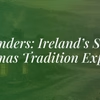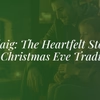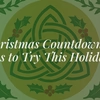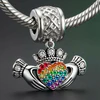Understanding The True Essence of Irish Dancing. Why Do Irish People Love To Dance? History, Type, Music, And So Much More.

As Irish people, dancing isn’t just something we do for fun during occasions and weddings. It’s much more than that. These dances we have brought through generations are instilled and rooted in our genes. The only problem is people quickly assume that the only dance we can do is river dancing or the Irish jig in some cultures. Little do they know with the wide variety of Irish music in our arsenal, each melody and beat has a corresponding dance, and each dance is filled with stories.
Of course, we won’t say that dancing the Irish jig or river dancing isn’t fun. Look at every individual practicing the dance and every other culture learning it; you can immediately see that it can put a smile on your face even if you are off-beat.
So where does the dance come from, and why is it a tradition in Irish practices? What is the history behind such steps and beats that make it so attractive?
Let’s break it down into parts so we can further understand the true essence of Irish dancing.
Brief History
The roots of Irish dancing date back to Celts and Druids dancing rituals in a circular fashion amongst sacred trees. If you haven’t learned about the Celtic Tree Of Life or ancient trees in Celtic practices, you wouldn’t know why these trees are essential. It is within the Celtic belief that these trees represent the medium between life and the after-dash.
Some stories even portray that these trees become our passage to stay connected with those who have come before us. In other practices, the Celtic Tree Of Life directly represents the timeless cycle of birth-death-rebirth. Either way, these trees are deemed sacred; therefore, specific dances are performed to showcase our patronage of such beliefs.
From that perspective, we can see how these dances have evolved over time and would be performed in Irish traditions even without a physical tree in sight. The meaning and imagery of the melody and steps imply our faith and practice.

Routines
Irish dancing is divided into three main categories: set routines, social or ceili routines, and step routines. There is minimal upper body movement, but the rest of the action is slow and precise, with specific and numerous steps that must be completed.
This was primarily because, before the 18th century, local pubs and barn dances tended to be very small in size and capacity, resulting in little room for movement or dancing all over the floor.
Irish dances, including Ceili routines, were the most popular and standard feature of every social occasion. There are usually at least two people, and the number can range from two to sixteen. There are choreographed dance routines predicated on the French quadrille music and dance, also known as “squares,” of four couples who perform various moves throughout the song, which are repeated during the performance. Besides these additional steps, such as swapping sides and partners, the routine can quickly become disorganized if you don't know what you're doing.
In this instance, "step routines" are derived from the traditional Sean Nós style of dancing and are the mainstay Irish dancing style chosen by the Irish Dancing Commission. In this choreography, each phase is danced twice, first with each foot and then with arms held more loosely than in other dance styles. Percussive sounds are created by hitting various surfaces with the feet to enhance the beat of the music. These dances used to be executed on the upper end of storage tanks or tables during the 18th century.
Music
A harp, bagpipe, or singing typically accompanied Irish dancing. However, as the dances became more complex, so did the tunes. Like there are a lot of different choreography and dance routines, there is also a range of other music and instruments. Goatskin bodhran, concertina, and uilleann pipes are typical Irish instruments (Irish bagpipes). Solo equipment will frequently accompany solo dancers when they dance on stage.


Costumes
For foreign Irish dancing tournaments and showcases, ornate and flashy costumes are more common, but in modern and traditional Irish dancing, more conservative and flexible attire is worn. Regardless of the type of dance, shoes come in hard or soft. The hard shoes have fiberglass tips and heels, while soft boots are generally leather lace-ups known as ghillies. Reel shoes, also known as “soft shoes,” have a stiff heels, but instead of the noise from hard shoes, they make sounds only to a minor degree.
Generally, male dancers wear a shirt, vest, and tie while wearing dark trousers. Female dancers, on the other hand, wear specially designed dresses. Every Irish dancing education system has a uniform that is distinctive to the school. Dresses fall between the knee and mid-calf, and they are traditionally pleated and have long sleeves with an intricate Celtic design or embellishment somewhere on the chest and back.
Previously, women had to wear ringlets or hairpieces, but this is starting to fade away. Over the last few decades, outfits have become more versatile and breathable, especially in dress construction and ornamentation. For competitions, people were more likely to see dancers wearing dresses with hair that was straight and simple. This ensures that the dancer's footwork and movement are the primary focus.
Ultimately, no matter what type of dance we choose from the variety we have as Irish people or whatever costume we deem worthy of dancing in, we all share one goal: to dance for what we believe in. Our culture and heritage have safeguarded these routines and steps passed on to our generation; let’s not forget our roots and continuously dance our worries away.
The best part about our Irish culture is that these values and beliefs are also embedded in jewellery. Imagine dancing to our ancestors' beat while adorned with subtle yet elegant Celtic pieces.
Visit our store today and at Celtic Knot Jewellery. Dance like nobody’s watching and sparkle like the bright Irish beauty you have within.
If there are other Irish dances and routines we may have missed, feel free to comment below, and we would love to learn and further expound our knowledge of our rich heritage.





